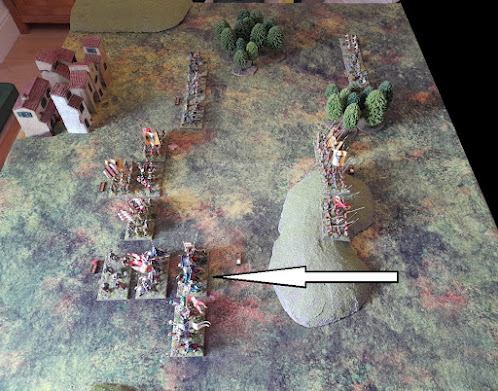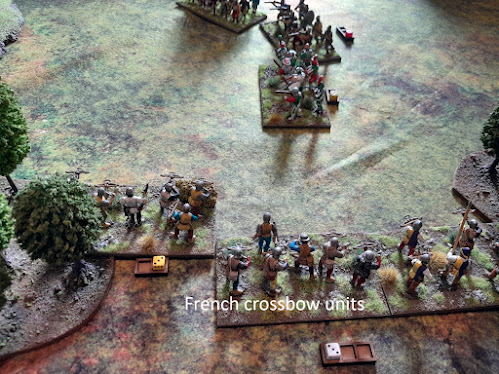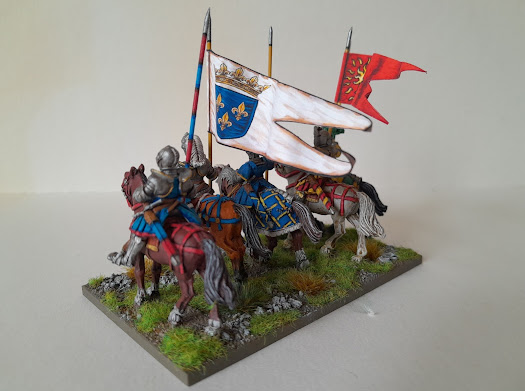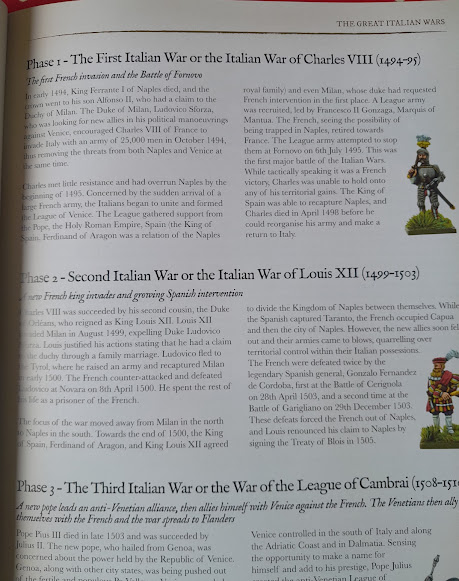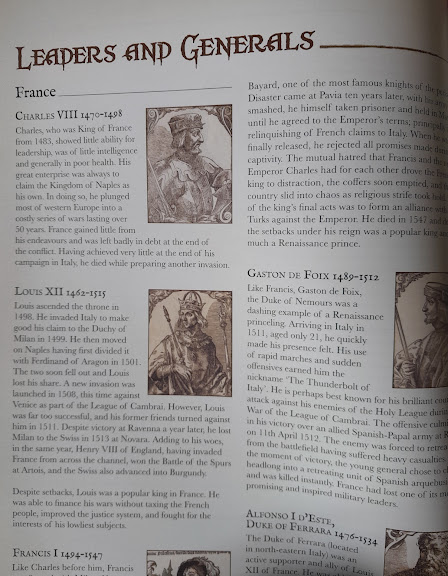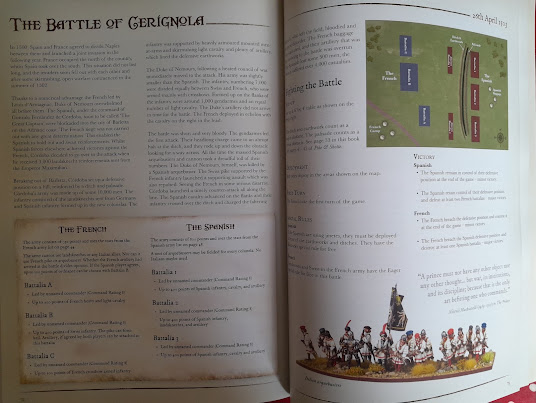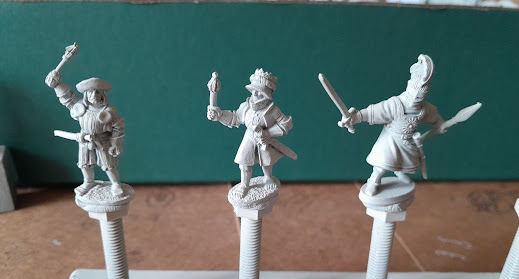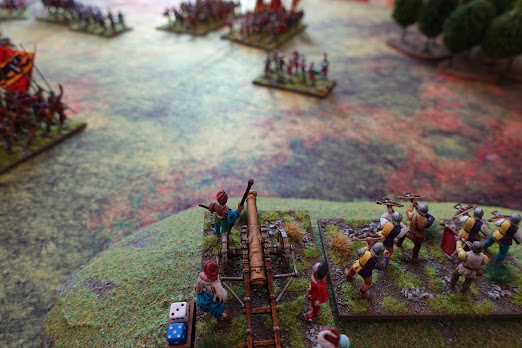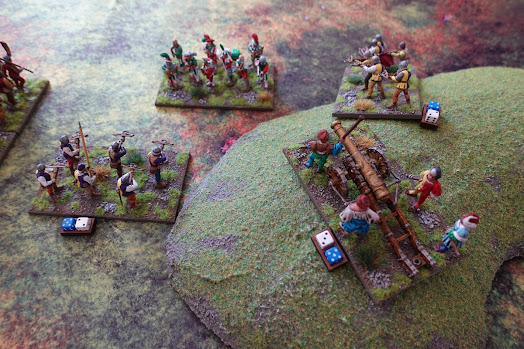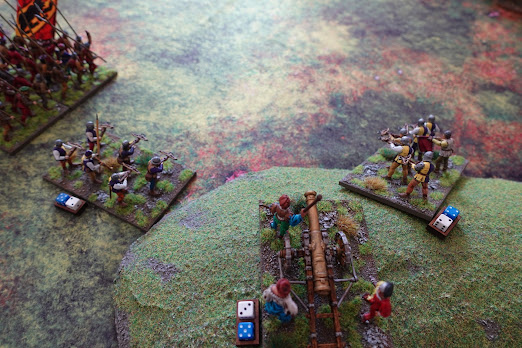Having tested my big game rules for the Italian Wars with success (see here for report), it was time to try out what I hope will be fast play rules for smaller games.
It is hoped that, with these rules, small campaigns can be played by the Rejects with multiple games in a day. Plus, I'm looking to use these rules for quick remote games.
Anyway, let's find out how they played.
 |
| The two armies deployed across the battlefield. In this encounter the nominal sides are Imperial/Spanish versus a French force. |
 |
| The French army deployed in three Battles. Their commander rolled up as an efficient leader. |
 |
| The Imperial forces, also in three Battles. Their leader turned out to be plodding. |
The status of the army commander mostly determines command radius. If a Battle leader is out of command then that Battle may be able to do less in a turn.
Each turn, each army reveals a card which determines the number of actions each unit can carry out (e.g. 1, 2 or 3 actions: move, wheel and shoot). The better the army commander, the more high action cards are available. An Battle out of command always loses an action.
 |
| The Spanish take the opportunity to charge the gendarmes. However, they fail to drive the French back and find themselves embroiled in an ongoing melee. |
 |
| The sword and buckler unit found itself having to withstand a, thankfully, feeble charge from what may be blown horses. |
 |
| Meanwhile, the Swiss and Landsknechts continue to close the distance. In the north, the missile troops of both sides found themselves in a ranged stand-off. |
 |
| With a slight shift of focus, the Imperial arquebusiers poured fire into a French pike block and sent it reeling backwards in alarm. |
 |
On the southern flank, the Spanish men at arms and the sword and buckler units are scattered.
The Imperial flank is looking rather exposed. |
 |
| In the north, the French's weight of shooting causes an Imperial arquebusier unit to rout and disperse. (sorry, the label in the photo is wrong... me bad!) |
 |
| With the centre yet to clash, the Imperial army is having a bad time of it! |
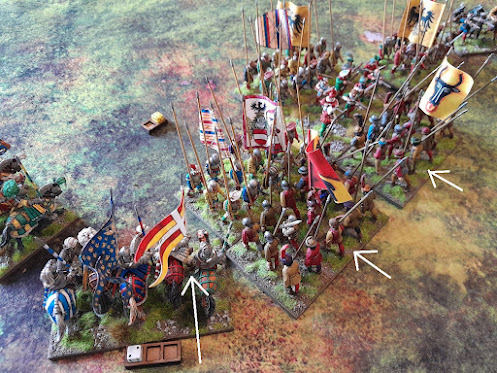 |
| The French charge the Landsknecht. However, the Swiss Pike is now running on "tired" and can't make the most of their impact. |
Each order adds or takes away from a Battle's exhaustion level. For example, a charge order is +3, manoeuvre is +1, stand and defend is -3. When a Battle reaches 5 it is tired, at 7 it is exhausted. If the Battle gets to -5 it is discouraged, at -7 it is demoralised. Essentially, fatigue leads to minuses to melee and shooting; low morale leads to minuses to unit morale checks.
Afterthoughts
The rules played well. They made for a fun game. Sometimes the Battles did what was being asked of them. However, at some crucial moments they just didn't! To take one instance: with the gendarmes' charge stalled in front of the Spanish men at arms, they had the opportunity to charge. Unfortunately, their order was downgraded to "manoeuvre". They could still move into contact with the gendarmes but did not have the impact to earn the plus 1 in melee.
The rules are an adaptation of an old set bought decades ago. Every time I read them, I find them to my liking. With no desire to start a medieval project, I ran with them and made some changes for the Italian Wars. So far, so good.
So, how long did the game take? and does it meet the quick play criteria of about an hour?
Well, I timed the playing time at1 hour 20 minutes. This included references to the rules during the game. I think that next time it will play faster. Perhaps, I need to limit the number of units to six (there were eight a side in this one) in two Battles a side? I'll ponder on that.
Back to the painting desk, I think.




